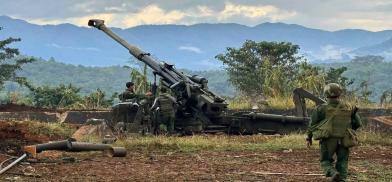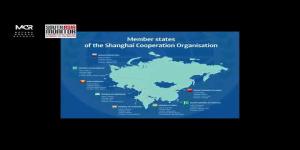Myanmar's Collapse Will Have Consequences Far Beyond Asia
What began with a coup in 2021 has devolved into a theater for China’s energy security, India’s border anxieties, Russia’s arms sales, and America’s China strategy. Each external actor pursues its narrow interests; none has the incentive to restore genuine stability. The losers, inevitably, are Myanmar’s people.

Four years into Myanmar’s civil war, the numbers alone tell a devastating story: 82,000 lives lost, 3.2 million displaced, and a military government that controls perhaps a fifth of its territory. The rest of the country has fractured into enclaves of ethnic militias, separatist armies, and rebel movements that barely acknowledge the authority of capital Naypyidaw—or each other. In some regions, even the national currency has ceased to circulate.
Myanmar is not merely in crisis; it is dissolving into what political scientists call a “durable disorder,” the kind of stateless chaos more familiar in Somalia or Libya.
But unlike those countries, Myanmar’s disintegration is unfolding in the strategic heartland of Asia. Its collapse has created a vacuum into which narcotics traffickers, human smugglers, and arms dealers have poured. More dangerously still, it has invited the intervention of foreign powers—China, India, Russia, and the United States—each trying to bend the outcome to its own advantage. This is no longer just a civil war; it is an experiment in 21st-century proxy warfare, a grim tutorial in how regional rivalries fuel state failure. And as history suggests, what happens in Myanmar will not stay in Myanmar.
A Country in Fragments
At the center of this unraveling sits General Min Aung Hlaing and his so-called State Administration Council. On paper, it governs the nation; in practice, its reach barely extends beyond a few garrison towns and highways. Elsewhere, power is contested.
In the north, the Kachin Independence Army demands outright autonomy. In the west, the Arakan Army is edging closer to a secessionist Rakhine nation. Chin State has become a microcosm of internecine war, with rival militias fighting not only the military but each other. In the east, Karen and Karenni forces continue their decades-long insurgencies. Even the Shan, historically divided, have fractured further, some groups advocating federalism, others secession.
Layered atop this ethnic patchwork is the People’s Defense Force (PDF), the armed wing of the exiled civilian government. It aspires to topple the junta and replace it with a federal democracy. Yet its ambitions collide with those of ethnic militias who prefer independence over union. The result is a Hobbesian battlefield: no single coalition, no common vision, and no credible roadmap for peace.
China’s Corridor and Calculations
Of the outside players, China’s role is paramount. Geography dictates it. Myanmar is China’s only immediate neighbor that provides direct land access to the Indian Ocean—a vital alternative to the U.S.-patrolled Malacca Strait. Through Myanmar runs a 1,700-km corridor of pipelines, roads, and planned railways connecting Yunnan province to the Bay of Bengal. At its southern terminus lie two signature projects: the $7.3 billion Kyaukphyu deep-water port and a $1.3 billion special economic zone. For Beijing, these are not optional investments. They are lifelines.
That imperative explains China’s careful duplicity. It sells weapons to the central government while tolerating the flow of Chinese-made arms to rebel groups such as the United Wa State Army. The unspoken rule: fight if you must, but don’t touch Chinese assets. Thus far, all sides have abided.
This is not unprecedented. In the 1980s, after Myanmar’s pro-democracy protests were crushed, the West imposed sanctions. Beijing stepped in, flooding the country with arms and trade, cementing influence but also arousing the junta’s suspicion of overdependence. The military tried to diversify, buying fighter jets and helicopter gunships from Russia. Today, those same Russian aircraft are used to bomb rebel strongholds. But with Moscow bogged down in Ukraine, Beijing is once again the indispensable patron.
India’s Uneasy Hand
India’s approach is less coherent. Its overriding concern is the stability of its own northeast, where separatist groups have long used Myanmar’s lawless frontier as a sanctuary. To counter them, India has collaborated with the junta, carrying out cross-border strikes and drone attacks. Yet beyond security, New Delhi has little leverage. Unlike Beijing, it has no vast economic footprint in Myanmar and scant connections to ethnic militias. Its attempt to balance between engaging the junta and protecting its frontier looks more like improvisation than strategy.
America’s Shadow Game
Washington’s strategy has been characteristically ambiguous. Publicly, it has restricted itself to non-lethal aid for the exiled civilian government and sanctions on junta officials. Quietly, the picture is murkier. Reports suggest that the U.S. is expanding its intelligence footprint through a $248 million consulate complex in Chiang Mai, northern Thailand. Local sources even hint at plans for a supply base in Bangladesh’s Cox’s Bazar to support rebel groups like the Arakan Army. Whether or not these claims are true, the logic is clear: undermine China’s corridor, threaten its access to the Bay of Bengal, and complicate Beijing’s strategic calculus.
But here lies the risk. By nudging rebel groups to escalate, Washington could deepen the humanitarian catastrophe without producing a viable alternative to junta rule. As in Afghanistan or Syria, arming proxies may weaken an enemy but rarely builds a durable state.
A Lesson in Proxy War
What makes Myanmar’s tragedy particularly instructive is its familiarity. The 20th century offered ample examples of countries gutted by great-power competition. Vietnam became the graveyard of two foreign empires. Afghanistan bled the Soviets, then the Americans. Syria was dismembered by regional and global players. In each case, what began as local unrest metastasized into internationalized war. The outcome was always the same: shattered societies, empowered extremists, endless displacement.
Myanmar fits this pattern almost perfectly. What began with a coup in 2021 has devolved into a theater for China’s energy security, India’s border anxieties, Russia’s arms sales, and America’s China strategy. Each external actor pursues its narrow interests; none has the incentive to restore genuine stability. The losers, inevitably, are Myanmar’s people.
The Future: Chinese Broker or Failed State?
If history is a guide, one actor may yet impose a semblance of order: China. Already, Beijing has mediated truces in northern Shan State. Given its leverage with both the junta and key militias, it is the only power capable of brokering a nationwide ceasefire. Yet even that prospect is double-edged. A China-engineered peace would likely secure Beijing’s corridor while entrenching Myanmar’s dependence on its northern neighbor. Independence movements might be suppressed; democracy sidelined. Myanmar would survive, but as a quasi-protectorate of Beijing.
The alternative is bleaker: a failed state permanently carved up by ethnic armies and proxy patrons, a Southeast Asian version of Syria. That outcome would not only immiserate millions but also destabilize a region that includes India’s fragile northeast, Bangladesh’s refugee-burdened coast, and Thailand’s restive borderlands.
The Moral Blind Spot
For the West, the crisis poses a familiar moral dilemma. To do nothing is to abandon millions to tyranny and anarchy. To intervene is to risk repeating the hubris of Iraq or Libya. Yet indifference is not neutral: it is a form of complicity. If Myanmar becomes a narco-state on China’s corridor, the consequences will reach far beyond Asia.
What’s needed is a sober recognition: Myanmar is not a fight that outsiders can win. But they can choose not to make it worse. That means pressuring Beijing to take real responsibility for the peace it claims to seek. It means restraining the temptation to use rebel groups as pawns in a great-power rivalry. And it means keeping the plight of ordinary Burmese—displaced, dispossessed, and forgotten—at the center of policy.
In geopolitics, what isn’t stopped is studied, and what is studied is replicated in the next war. Myanmar today is both a tragedy and a warning: a reminder of how state failure becomes a laboratory for great-power competition, and how proxy wars breed only more violence. The country may be collapsing in real time, but the world has seen this collapse before. The question is whether anyone is willing to learn from it.
(The author is a political and strategic analyst based in Dhaka, Bangladesh. Views expressed are personal. He can be reached at writetomahossain@gmail.com)










Post a Comment